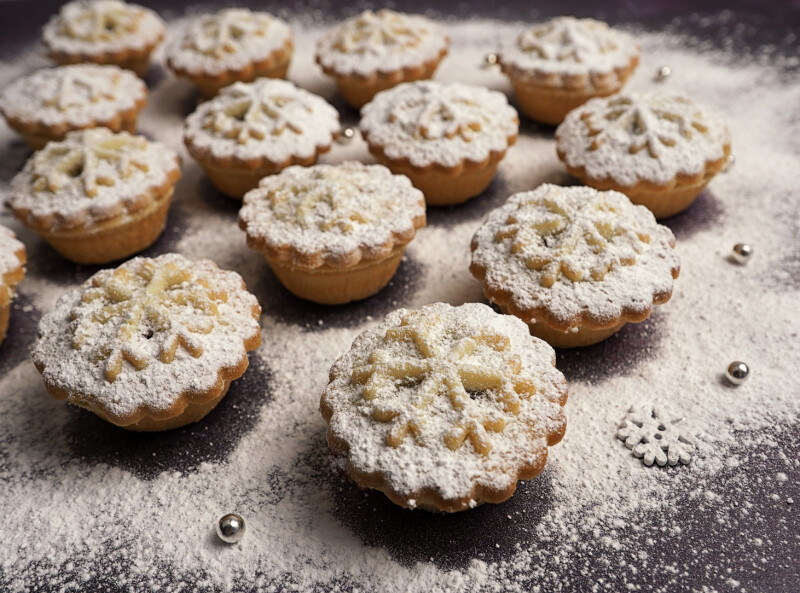In each issue of LDS Living magazine, we love to share short and simple fun facts related to the season, our faith, or other interesting tidbits that we think are just too darn fun not to talk about. So to satisfy that craving you might be having for some trivia, we thought we’d share a few of the facts and other tips from our November/December issue on our website.

No Pie? Then Thanksgiving Is Canceled
The year was 1705, and a cold snap was gripping the town of Colchester in the Connecticut Valley. The wind was frigid and relentless, and three feet of snow blanketed everything. But the biggest problem was that the river had frozen over much earlier than normal, preventing the community from receiving its usual shipment of molasses. No molasses meant no pumpkin pie, and the people decided that without pumpkin pie, Thanksgiving simply wasn’t worth having. A vote formally postponed the holiday until they could get enough molasses. The Great Colchester Molasses Shortage became a food legend, and a 1908 edition of Good Housekeeping Magazine ran a lengthy poem about it, the last line of which suggested that the poor, cold people of Colchester did eventually have their feast: “For pies of pumpkin so rich and brown; Colchester folk at last sit down.”
Facts and Figures about Belgium Chocolate

- 800: Tons of chocolate sold annually in the Brussels Airport
- 12: Soccer fields Size of Belgium’s chocolate warehouse aptly named “the Chocolate Box”
- 540: Approximate number of Belgian chocolate manufacturers
- 13: Approximate pounds of chocolate consumed per person in Belgium annually
- 8.5%: Proportion of the Belgium workforce employed in the chocolate industry
Joseph’s Last Christmas
Joseph Smith’s Christmas celebrations began quite early in 1843. On December 15 at 1:00 a.m., the Smith family was awakened in their home in Nauvoo by a small band of carolers singing outside their window. “It caused a thrill of pleasure to run through my soul,” the Prophet recorded. In Christmases past, Joseph had been separated from his family; one year he was imprisoned in Liberty Jail, and another he spent in Washington seeking redress for the suffering Saints. But this year, Joseph was at home and hosted a party that evening with music and dancing held “in a most friendly manner.” It is touching to think that such a joyful Christmas would prove to be Joseph and Hyrum’s last. So many around the world are grateful for the brothers’ testimonies of the divinity and ongoing work of that special babe born in Bethlehem.
Facts and Figures about The Tabernacle Choir Christmas Concert

- 1: Number of times guest artists rehearse with the Choir and Orchestra before performing
- Top 3: Place Kristen Chenoweth ranked her Christmas performance with the Tabernacle Choir in her career highlights
- 98%: Approximate proportion of Christmas concert performers who are volunteers
- 60,000+: Number of people who attend the Christmas concert
- 5: Number of new arrangements Mack Wilberg composed for The King’s Singers performance in 2007
The Symbol of a Snake
The Come, Follow Me manual invites us to ponder what we can learn about the Savior from symbols of Him in the Old Testament. Included on the list of symbols to study is Moses’s brass serpent. Those of us who get the creepy-crawlies looking at reptiles may be wondering why a snake is used to represent Christ.
Well, the scaled creatures have an interesting history in the ancient Middle East. For example, in Egypt, snakes represented any number of gods of the earth and underworld and certain life-giving powers were attributed to them. This may have had something to do with how snakes shed their skins and expose a “new body” by doing so. A serpent biting its tail was a common emblem in Egypt, representing eternity and survival after death. Israelites may have been familiar with images of fiery serpents due to their exposure to Egyptian mythology. The symbol of the serpent Moses used would therefore show that the serpent truly represented God’s power over life and death and He is the reality behind the symbol.
The Globe Skimmer’s Flight Plan

A tiny species of dragonfly dubbed the “globe skimmer” flies over 11,000 miles in a migration from Africa to India and back—but it doesn’t do it on its own. In fact, no single globe skimmer completes the entire journey. Instead, the trek is done in a sort of relay race: each generation completes a leg, lays its eggs, and then dies, trusting its posterity to carry on the journey. Each new generation has never been where it’s going, yet each globe skimmer still knows exactly which direction to fly. Pretty impressive when you consider how often humans need help from a navigation app.
Santa’s Favorite: Mince Pies or Risengrod?

Is Santa’s sleigh pulled by eight flying reindeer or six white kangaroos? That depends on if you ask a child from the US or a child from Australia. Christmas traditions are as varied as Santa’s belly is round—and that includes the foods that welcome Santa when he comes down the chimney. Here is a list of what children in countries around the world may leave out in hopes of getting on dear old Saint Nick’s good side:
- Chile: Pan de Pascua, a rich sponge cake with dried fruit and nuts.
- Denmark: Risengrod, a Danish rice pudding flavored with cinnamon.
- England: Mince pie, a pie filled with mincemeat, sweet fruits, and spices.
- Germany: Instead of food, children often leave thank-you notes for Santa.
- Iceland: Laufabrauð, a bread made of very fine dough that is decorated and fried.

